[Editor’s note: The review which follows provides important background material to the rise of modern commercial republics and their navies. We will be writing more on the US Navy, Merchant Marine, and Coast Guard in future issues.]
Andrew Lambert’s Seapower States: Maritime Culture, Continental Empires and the Conflict that Made the Modern World (New Haven: Yale University Press, 2018), 424 pages, $30.
Reviewed by Lydia Schulman
In Seapower States, eminent naval historian Andrew Lambert chronicles the rise and fall of five great “seapowers”—Athens, Carthage, Venice, the Dutch Republic, and Britain. They were characterized, Lambert writes, by a set of common features:
- They prioritized naval over military power, commerce over territorial expansion
- They were politically inclusive, requiring the financial support of merchants to construct great arsenals of ships and of sailors to man them
Being relatively poor in the dimensions of population and land — the necessary basis of powerful armies and cavalries — they sought a different approach than continental states to great power status. The downside was that they suffered defeat when drawn into large-scale land wars in which they were not equipped to compete.
Lambert distinguishes the seapower states from those continental great powers that merely employed sea power for strategic ends—Rome, the Ottoman Empire, and today, the United States (he claims) and China, among others.
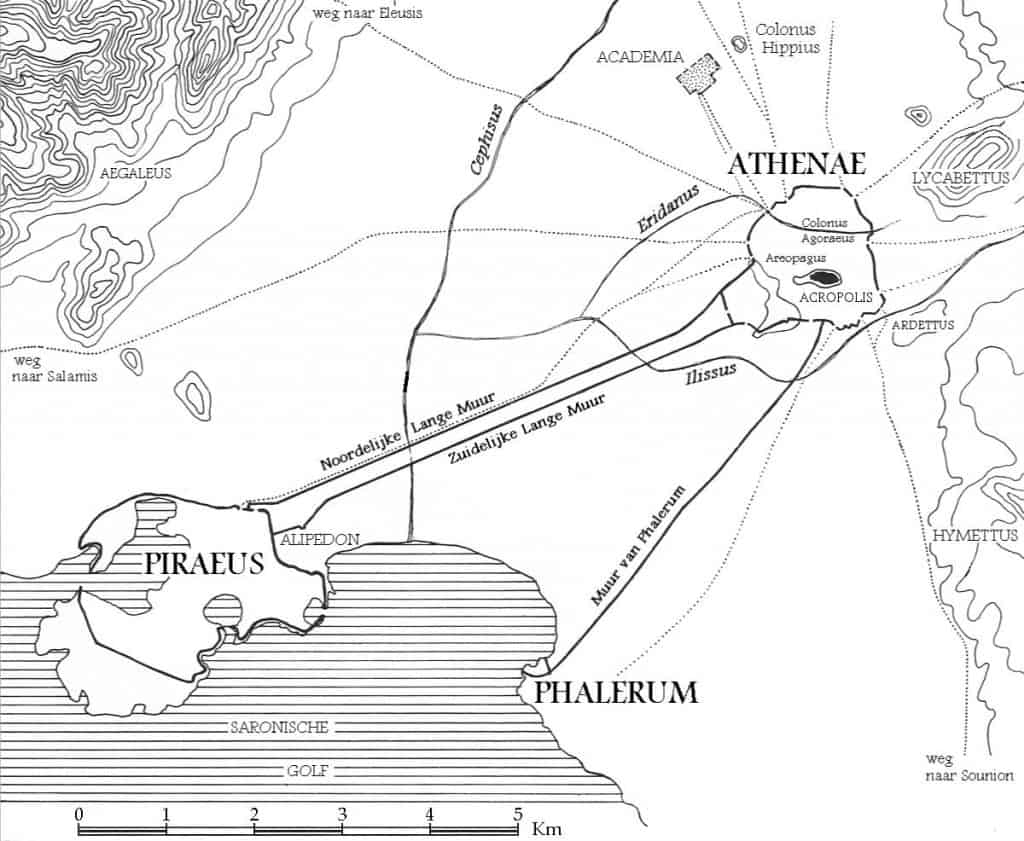
The seapower states were either insular or enjoyed protected access to the sea. In Athens’ case, this was accomplished by Themistocles’ Long Walls that connected Athens to the port of Piraeus. But becoming a seapower state was a conscious choice, not merely geographically determined, and they drew on their predecessors’ successes and failures for guidance. Fifth-century Athens drew on the folk memory of a seafaring culture in Minoan Crete. The defeat of the Spanish Armada became England’s Salamis. Amsterdam saw itself as a reborn Venice complete with canals. This self-constructed identity, moreover, was consciously reinforced by cultural artifacts—not just monumental maritime art and architecture but coins, pottery, printed images, and, later, even films.
The book’s subtitle — Maritime Culture, Continental Empires and the Conflict that Made the Modern World — points to the other part of Lambert’s story. He presents the outward and forward looking seapowers as in perennial conflict with imperial continental powers (the Persian, Roman, and Ottoman empires and Bourbon and Napoleonic France, among others). He argues that the latter felt so threatened by the political inclusiveness of the dynamic maritime states that they sought their utter destruction (as in the Roman annihilation in 146 BC of Carthage and Corinth. (The latter, like Athens, was a successful maritime economy with a popular assembly.) Military defeat aside, “As a group [the seapowers] did more to advance trade, knowledge and political inclusion than their landed peers: they shaped the global economy and the liberal values that define the contemporary Western world,” Lambert writes.
At least one reviewer, Ian Garrick Mason in The Spectator, finds the “sea-power-begets-freedom” part of Lambert’s argument overdrawn and unconvincing: “To Lambert, the sea’s beneficial impacts—which he grandly summarizes as ‘the economic, political and intellectual agendas of progress’–were enjoyed by seapowers alone, rather than shared in varying amounts by all states.” Mason continues: “More broadly, the argument that expensive public goods require political inclusivity should have been testable against many other cases not related to sea power,” such as the road-building of imperial Rome and pyramid-building of the Egyptian monarchy—two cases, one should add, where forced labor rather than political power-sharing enabled the projects.
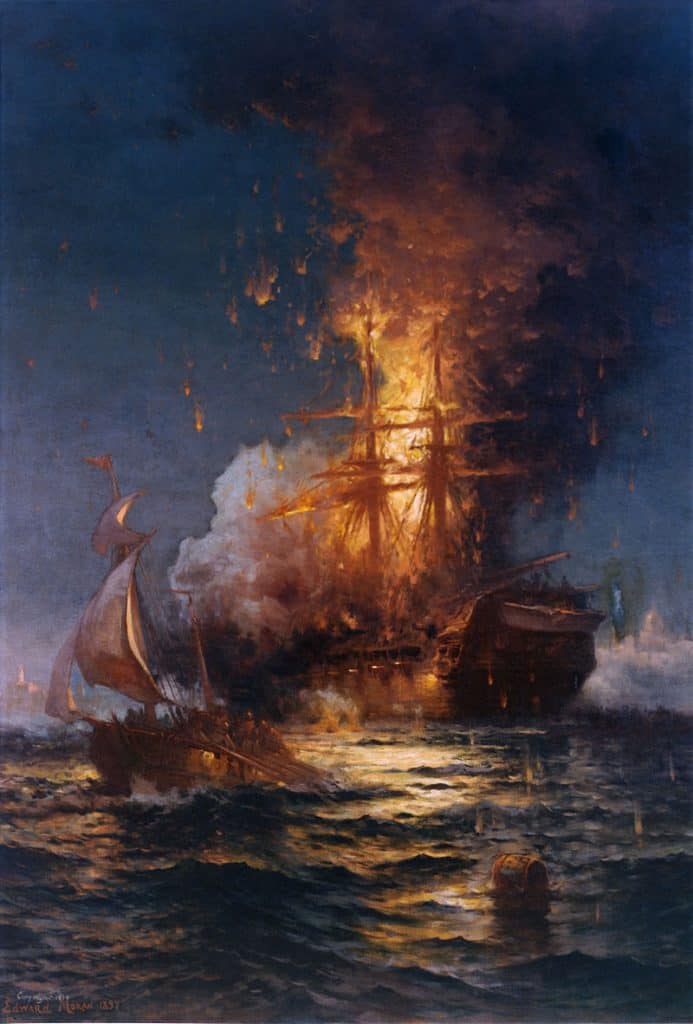
A cultural bonus
Lambert’s more debatable claims aside, the bulk of his 400-page survey offers a fascinating in-depth portrait of the five states and some unexpected dividends as well. Lambert’s insights about the connection between political economy and culture in the five states he studied add a new dimension to our understanding of some of the great artistic works of the Western tradition and even shed new light on the emergence of Golden Ages in the arts in those states, concurrent with their great power status.
Athens
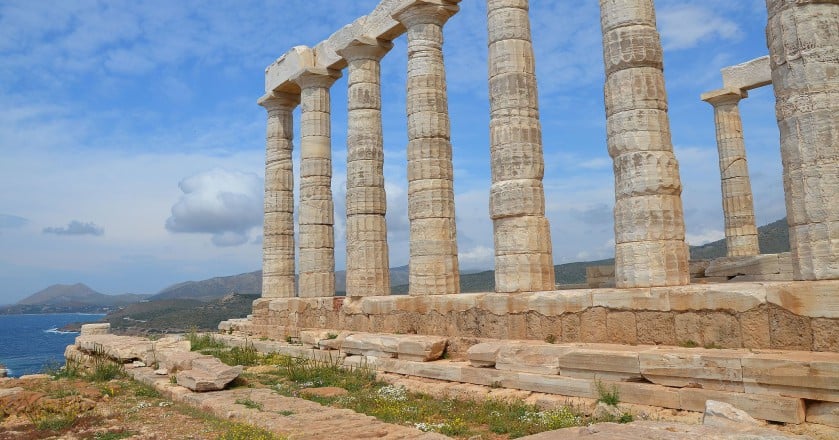
Remaining pillars of the Temple to Poseidon on Cape Sounion. To ships heading for Piraeus (Athens’ harbor), this temple was as iconic and inspiring as the Statue of Liberty was to immigrants entering NY harbor.
One such example is the magnificent Temple to Poseidon on the strategic Cape Sounion at the southern-most tip of Attica. Certainly it is not surprising to find a temple to the Greek god of the sea on a promontory looking over the Aegean; however, Lambert’s narrative supplies enriching historical context. This graceful Doric temple (fewer than half of whose columns survive), along with a naval station and ship sheds, was erected in the mid-440s BC on the ruins of an earlier temple razed by Xerxes I’s invading Persians. It was one element of the ambitious building program of Pericles, which included a 30-foot statue of Athena on the Acropolis and a realignment of the Propylea, or entrance, to the Parthenon complex. As soon as ships rounded Sounion and the majestic Temple to Poseidon, Athena’s crest and the point of her spear would come into view and remain visible in the approach to Piraeus. As a result of the contemporaneous realignment of the Propylea, “everyone who left the Parthenon complex had a panoramic view of Salamis,” site of the decisive naval victory of the Greek alliance led by Athens over the Persians in 480 BC. The Temple to Poseidon, more than a great example of classical architecture, was a pivotal element in a “commanding celebration of [Athens’] seapower.”
Venice
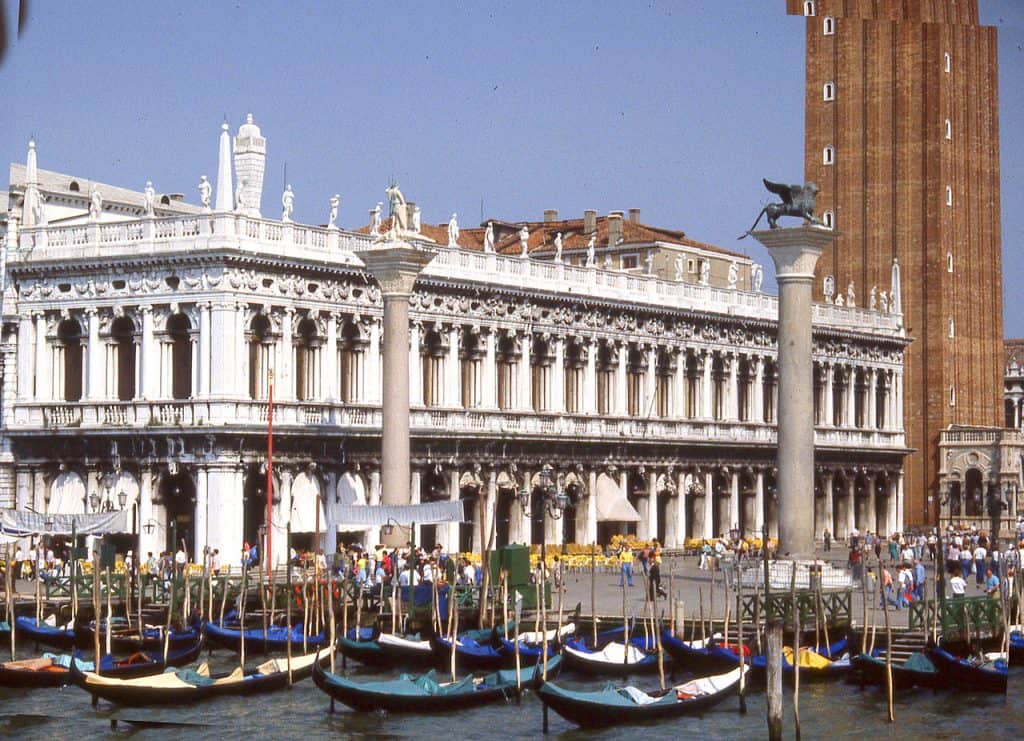
No longer a great power in the 16th century, Venice sought to reassert its cultural prestige and seapower identity through a program of architectural renewal. The Piazza San Marco, steps from the lagoon, and created in the 12th century by the filling in of a canal, had long been the ceremonial center of the city whose power and identity were inextricably linked with commerce and the sea. Shortly after the imperial sack of Rome in 1527 that declared Habsburg domination of Italy, architect Jacopo Sansovino was appointed to oversee the renovation of the Piazza, adding a Mint and Library, symbols of wealth and wisdom, to the prospect from the sea. Lambert comments: “The synergy between the Venetian and other seapowers’ exploitation of architecture as seamark, statement of power and ceremonial space is obvious. The Parthenon complex, Carthage’s Circular Harbor, Amsterdam’s Dam Square and massive naval magazine, along with the highly elaborate approach to London along the Thames . . . addressed the same agenda. All five seapower states created architectures of maritime power, aggressively connecting maritime trade, naval might and secular identity.”
The Netherlands
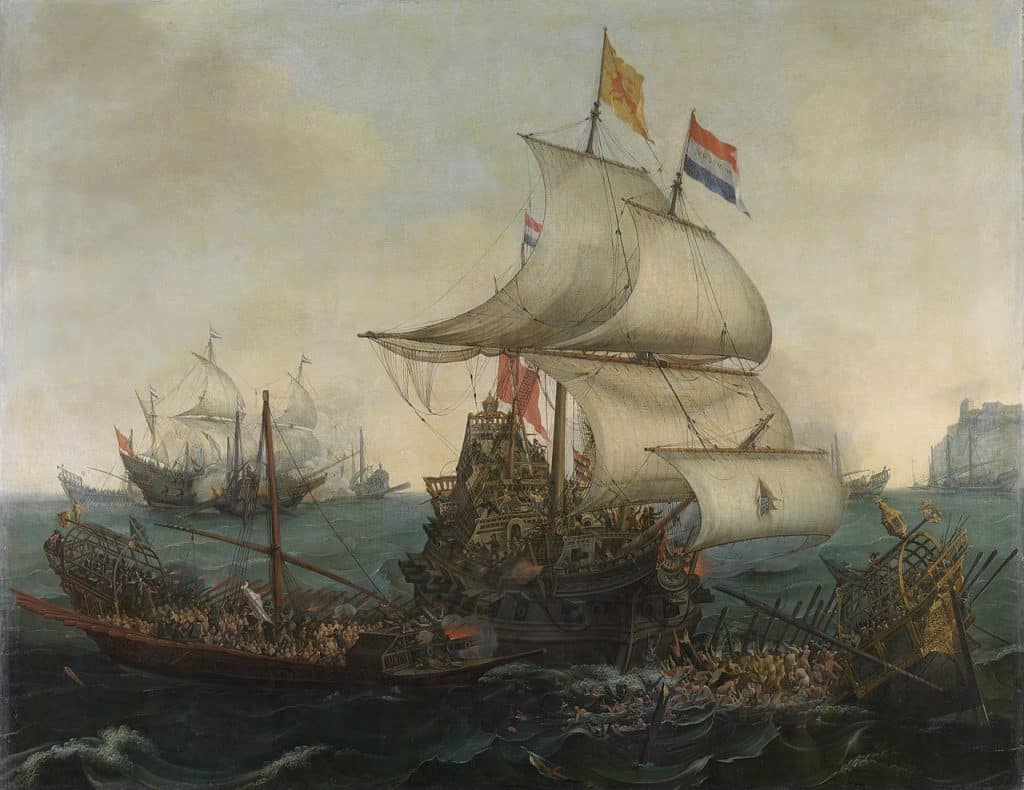
Hendrick Cornelisz Vroom, Dutch Ships Ramming Spanish Galleys off the Flemish Coast in October 1602 (Rijksmuseum, Amsterdam)
Further on in the chronicle we come to the Golden Age of Dutch culture. Lambert locates this cultural renascence within the context of the Low Countries’ 16th and 17th-struggles against outside powers—Spain and later Britain—and the ongoing conflict during the same period between the House of Orange stadholderate — land and military based and aristocratic — and the True Freedom regime, centered in Holland and Amsterdam and favoring naval power and commerce. By 1600 when the war of independence against Spain had ebbed, the True Freedom faction prevailed for a period of some 40 years. Amsterdam imagined itself as a northern Venice, complete with canals, and oriented toward trade with Asia, the Baltic, and the Mediterranean. Cultural support for this policy reorientation included the realistic seascapes of Hendrick Vroom and other artists, monuments honoring naval officers, and construction of an imposing Town Hall on the site of the original dam on the Amstel River, the city’s main harbor, thus integrating government and commerce in a central square that invited comparison with Venice’s Piazza San Marco. In the same period, a novel, truly revolutionary element was added to these public expressions of Amsterdam’s seapower identity. “By the mid-seventeenth century a dynamic art market had emerged, supported by middle-class rather than elite or royal patrons, an audience that placed the sea at the center of Dutch identity. Pictures became familiar items of private display, portraits hanging alongside images of vessels. Amsterdam’s emerging seapower culture combined elite patronage for public consumption . . . with pictures suitable for bourgeois domesticity.” One thinks of the portraits, scenes of everyday life, landscapes, and the still lifes of Franz Hals, Rembrandt, Gabriel Metsu, Pieter de Hooch, Vermeer, Jacob van Ruisdael, and too many other great painters to list.
Great Britain
Britain had more than its share of monuments to its sea power identity—the forts, royal dockyards, and palace at Greenwich built by Henry VIII along the processional route to London; Nelson’s Column in Trafalgar Square. Seapower identity was also affirmed in the numerous maritime references in the plays of Shakespeare (written in the years following the defeat of the Spanish Armada): for example, in the dying John of Gaunt’s memorable evocation of England as a “scepter’d isle,” a “precious stone set in the silver sea.”
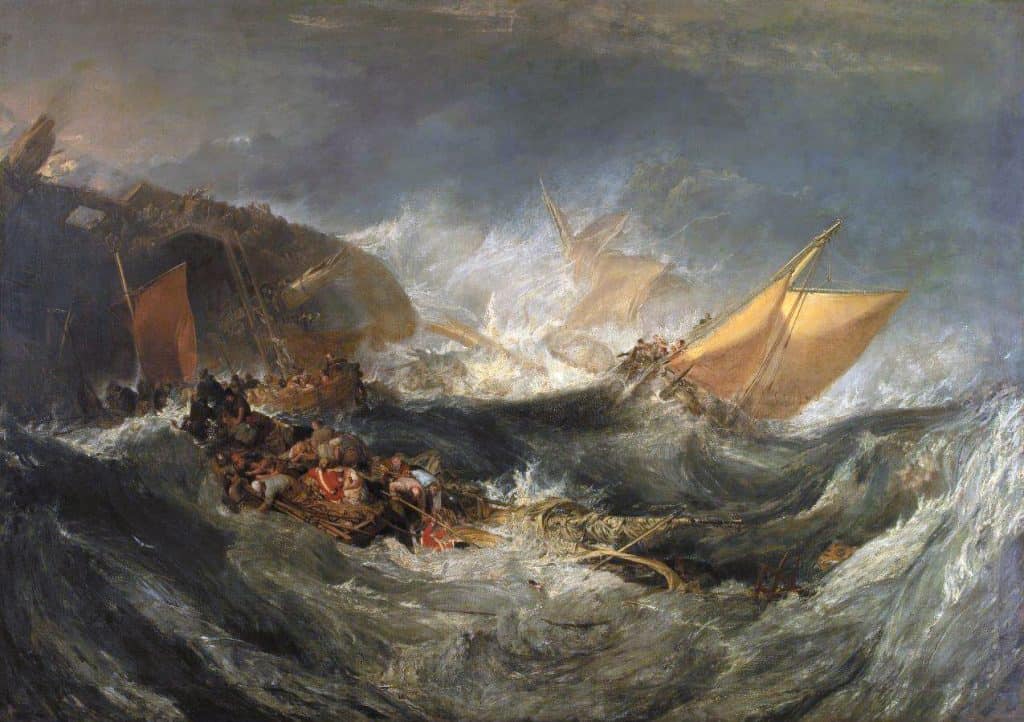
In a later period the maritime art of J.M.W. Turner celebrated Britain’s relationship to the sea and to her seapower predecessors with his monumental scenes of the harbors of Carthage and Venice and of Britain’s great naval victories. Underlining the sense of tradition among seapower states, future British Prime minister George Canning, then MP for the seaport of Liverpool, had predicted victory over Napoleonic France in January of 1814 — describing England as “the Carthage of modern times,” with the advantage that “unlike our assigned prototype, we have not been diverted by internal dissension from the vigorous support of a vital struggle . . . .” France had represented herself as Rome and England as Carthage, hoping to add insult to the injury of Napoleon’s “nation of shopkeepers” remark. Among the cultural artifacts supporting the “vital struggle” were new dockyards, a classical Admiralty building on Whitehall, and the “artistic language [developed by Turner] to represent the role of British seapower in opposing Napoleonic military imperialism.”
The above is a small sampling of the fascinating connections Lambert draws between the political economy of seapower states and the cultural artifacts that supported their identities. Lambert’s restatement of his major points along the way is welcomed; however, the manuscript would have benefited from editing to remove repetitions of supporting material. Still the book is a treasure trove and will appeal to the general reader as much as the specialist.
Lydia Schulman is the author of Paradise Lost and the Rise of the American Republic (Northeastern University Press, 1992), where she shows that both Milton and the American revolutionaries were partly inspired by the Dutch maritime republic and the Revolt of the Netherlands.

Leave a Reply